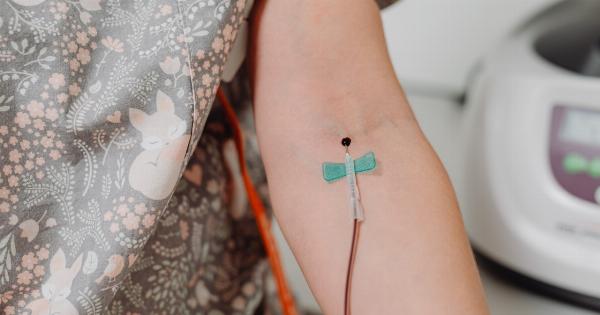Lymphedema is a chronic condition characterized by the accumulation of lymph fluid in the arms or legs, resulting in swelling and discomfort.
It commonly occurs after the lymph nodes are damaged or removed during cancer treatment, leading to a disruption in the normal flow of lymphatic fluid. While there is no cure for lymphedema, physiotherapy has proven to be an effective treatment option for managing the symptoms and improving the quality of life for individuals living with this condition.
Understanding Lymphedema
Lymphedema is classified into two main types: primary and secondary. Primary lymphedema is usually a result of inherited malformations of the lymphatic system.
Secondary lymphedema, on the other hand, is more common and occurs as a result of damage to the lymphatic system, often caused by cancer treatment.
The lymphatic system plays a crucial role in maintaining fluid balance within the body and helps transport waste materials and toxins away from the tissues.
When this system becomes compromised, the excess fluid accumulates and leads to swelling, often accompanied by discomfort, heaviness, and a decreased range of motion in the affected limb.
Role of Physiotherapy in Lymphedema Management
Physiotherapy plays a significant role in managing lymphedema by employing various techniques to reduce swelling, alleviate pain, and improve overall function.
A thorough assessment by a physiotherapist is essential to determine the severity of lymphedema and develop an individualized treatment plan tailored to the patient’s needs.
Manual Lymphatic Drainage (MLD)
Manual Lymphatic Drainage (MLD) is a specialized massage technique commonly used in the management of lymphedema.
During this therapy, a trained physiotherapist uses gentle, rhythmic motions to stimulate the flow of lymphatic fluid, directing it towards healthy lymph nodes that can efficiently drain the excess fluid. MLD helps to reduce swelling, improve lymphatic circulation, and enhance the overall function of the lymphatic system.
Compression Therapy
Compression therapy is a fundamental part of lymphedema treatment. It involves wearing compression garments, such as bandages or specialized sleeves, to exert pressure on the affected limb.
This pressure helps to reduce swelling, prevent the accumulation of fluid, and improve the efficiency of lymphatic drainage. A physiotherapist can guide patients on the proper use of compression garments and ensure they are fitted correctly for maximum effectiveness.
Exercise and Movement
Engaging in regular exercise and movement is highly beneficial for individuals with lymphedema.
Certain exercises, such as gentle stretching, aerobics, and resistance training, can help improve lymphatic circulation, reduce swelling, and maintain joint flexibility. A physiotherapist can design a personalized exercise program to suit the individual’s needs and capabilities while taking into account any limitations or precautions associated with the condition.
Education and Self-Management
Physiotherapists play a vital role in educating patients about lymphedema management and promoting self-care.
They provide guidance on proper skincare, infection prevention, diet, and lifestyle modifications to minimize the risk of complications and optimize the overall management of lymphedema. By empowering patients with knowledge and skills, physiotherapy enhances their ability to take control of their condition and improve their overall well-being.
Other Physiotherapy Techniques
In addition to the aforementioned treatments, a physiotherapist may employ additional techniques to manage lymphedema. These may include:.
1. Deep Oscillation Therapy: This non-invasive treatment involves electrostatic impulses transmitted through the skin to reduce swelling and promote lymphatic drainage.
2. Low-Level Laser Therapy: LLLT uses a low-intensity laser to target specific points on the affected limb, promoting lymphatic flow and reducing inflammation.
3. Kinesio Taping: Kinesio tape is applied to the skin in a specific pattern to facilitate lymphatic drainage and reduce swelling.
4. Range of Motion Exercises: Physiotherapists may teach patients specific exercises to help maintain or improve joint mobility in the affected limb.
Benefits of Physiotherapy for Lymphedema
Physiotherapy treatments for lymphedema offer numerous benefits, including:.
1. Significant reduction in swelling and discomfort.
2. Enhanced lymphatic circulation and drainage.
3. Improved joint mobility and flexibility.
4. Prevention of complications, such as infections and skin changes.
5. Increased knowledge and self-management skills.
6. Improved overall physical and emotional well-being.
Conclusion
Physiotherapy plays a crucial role in the management of lymphedema, offering effective treatment options to alleviate symptoms, reduce swelling, and improve overall quality of life.
Through techniques such as manual lymphatic drainage, compression therapy, exercise, and education, physiotherapists empower individuals to take control of their condition and achieve optimal outcomes. If you or someone you know is living with lymphedema, consulting with a qualified physiotherapist can provide the ultimate physiotherapy treatment for this chronic and challenging condition.




























